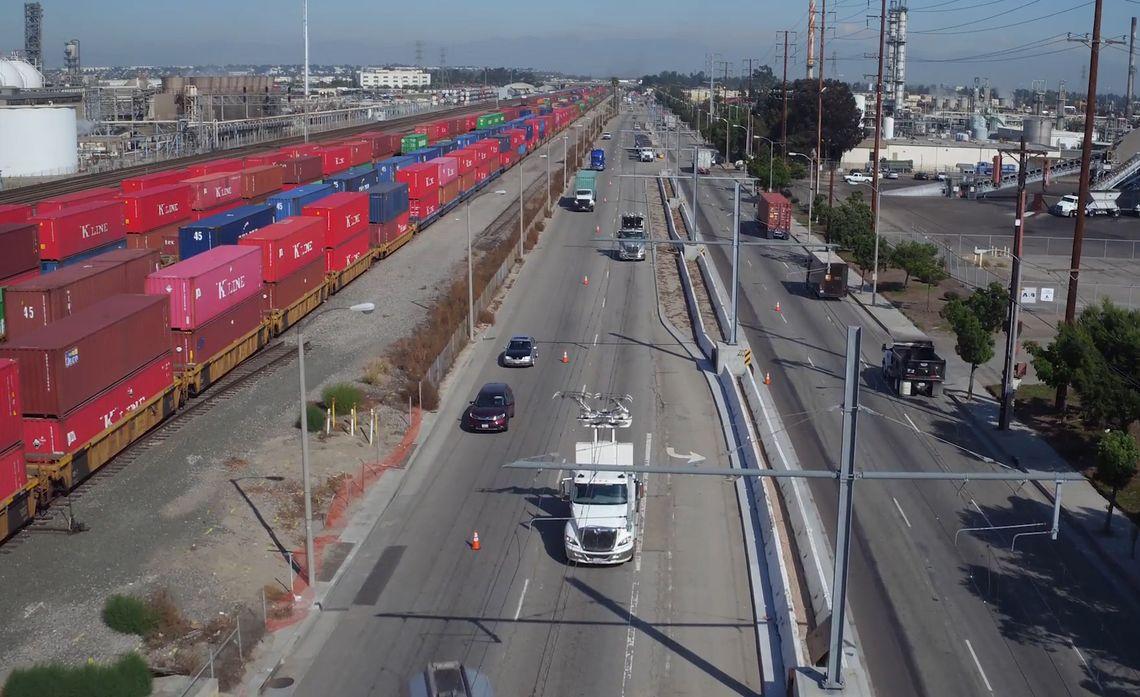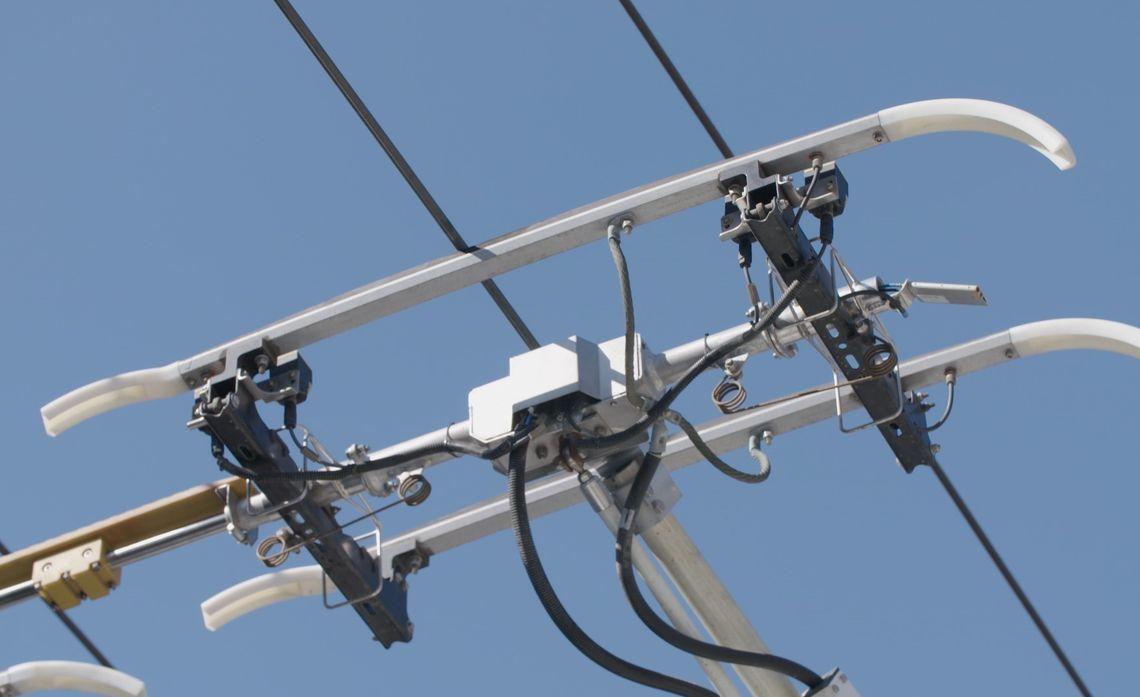First Electric Highway in U.S. Unveiled Near Ports of L.A. and Long Beach
Southern California Edison is helping to energize the project to support a cleaner energy future.
Electric trolleys first appeared in Los Angeles in 1887 and ran until 1961. This marked the beginning of Los Angeles’ long history of electric transportation. It continued in 1990 with the opening of Metro’s light rail blue line, which uses overhead electric wires to power the trains.
Fast forward to 2017.
On Nov. 8, the country’s first electrified highway, or eHighway, was demonstrated by the South Coast Air Quality Management District and Siemens. The demonstration of big rig trucks hauling freight took place on a mile-long stretch of Alameda Street near the ports of Los Angeles and Long Beach. Southern California Edison is providing engineering support for the project and analyzing how the system integrates into the grid.
Similar to modern-day streetcars and electric light rail systems, the eHighway uses an overhead catenary system connected to a pantograph on top of big rig trucks to provide electrical power. The pantograph can connect and disconnect automatically with the catenary lines via a sensor system while the trucks are moving, so the trucks can run when they aren’t connected to the overhead wires. The trucks are powered by an electric-hybrid drive system that switches to batteries, diesel or natural gas when they disconnect from the catenary system.
“One benefit of having an electric highway that can be linked to the ports is that it can help reduce air pollution and greenhouse gas emissions,” said Jordan Smith, SCE senior engineer. “It is also a cost-effective way of moving cargo from the ports and, if implemented, should result in lower cost in goods movement overall, which is good for our customers.”
According to the air quality management district, heavy-duty trucks are the No. 1 source of smog-forming emissions in Southern California. Many of the trucks haul goods from the ports to warehouses in the Inland Empire, meaning those customers living near the ports and along freight corridors are more adversely impacted by the emissions.
“This project will help us evaluate the feasibility of a zero-emission cargo movement system using overhead catenary wires,” said Wayne Nastri, executive officer of the air quality management district. “This demonstration could lead to the deployment of eHighway systems that will reduce pollution and benefit public health for residents living near the ports.”
“Experts expect global CO2 emissions from road freight traffic to more than double by 2050,” said Andreas Thon, head of Turnkey Projects & Electrification, Siemens North America. “This electrified truck system, what we call eHighway, can modernize the existing infrastructure using the latest technology to accommodate the growing amount of freight travel, reduce harmful emissions and keep these ports, one of our country’s major economic drivers, competitive.”
Projects like the eHighway are in direct alignment with SCE’s recently released proposal, “The Clean Power and Electrification Pathway.” The white paper calls for an aggressive approach to reducing California’s greenhouse gas emissions and improving air quality, especially in vulnerable communities like those near the ports and along freight corridors, such as the I-710 Freeway, in order to meet the state’s ambitious clean energy goals.
It also aligns with SCE’s position supporting a clean, zero-emission freight corridor as part of Caltrans and Metro’s I-710 Corridor Project. A catenary system, like the eHighway, is one alternative electric technology, among many potential technologies, that may successfully be implemented to power the envisioned zero-emission freight corridor on the I-710 Freeway and help reduce air pollution.






